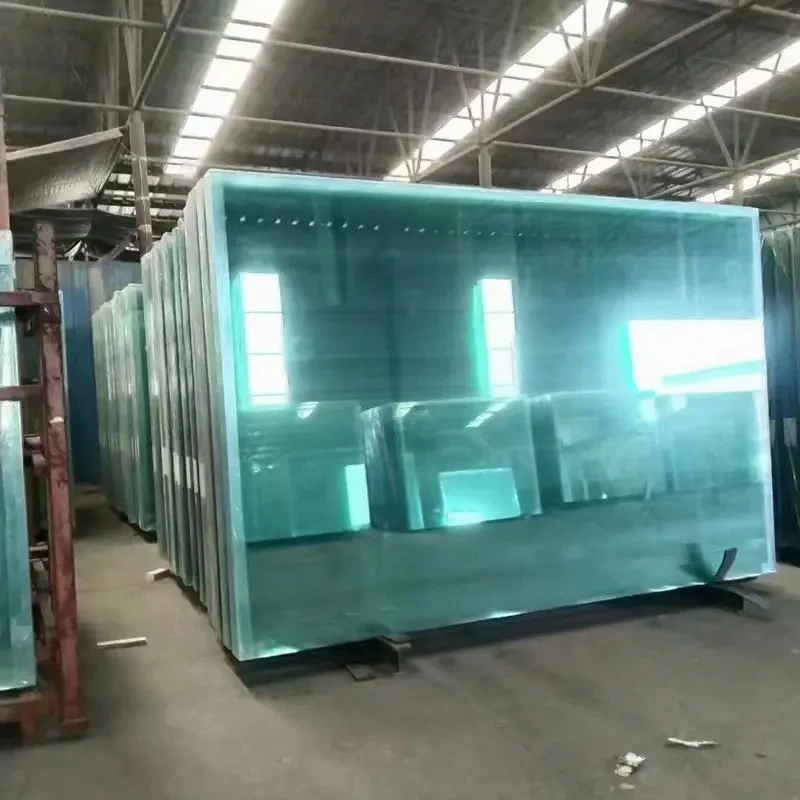The Difference Between Tempered Glass and Normal Glass
When it comes to choosing the right type of glass for a construction or design project, understanding the differences between tempered glass and normal (or annealed) glass is crucial. Both serve important roles in various applications, but they differ significantly in their manufacturing processes, properties, safety attributes, and usage.
Manufacturing Process
The primary distinction between tempered glass and normal glass lies in how they are produced. Normal glass, or annealed glass, is created by slowly cooling down the glass after it has been molded and shaped. This gradual cooling process produces a glass that has a uniform molecular structure, making it relatively easy to process and cut. However, it also results in a material that is more vulnerable to breakage.
In contrast, tempered glass undergoes a much more rigorous production process. After being formed and cut, it is heated to temperatures of about 620 to 650 degrees Celsius (about 1148 to 1202 degrees Fahrenheit) and then rapidly cooled. This process, known as quenching, alters the internal structure of the glass, making it much stronger than its non-tempered counterpart. The high-temperature treatment compresses the glass on its surface while creating tension within, resulting in a product that is considerably more resilient to impacts and stress.
Strength and Safety
One of the primary advantages of tempered glass is its strength. It can withstand greater pressure and temperature changes compared to normal glass, which makes it an ideal choice for applications where safety and durability are essential. For instance, tempered glass can be used in facades of buildings, glass doors, and even shower enclosures, where it can endure thermal stress and physical impacts more effectively.
In the event that tempered glass does break, it shatters into small, blunt pieces rather than sharp shards, significantly reducing the risk of injury. This safety feature makes it preferable in environments where people might come into contact with glass, such as homes and public spaces. On the other hand, normal glass, when broken, can create dangerous sharp shards that pose a significant risk of injury.
what is the difference between tempered glass and normal glass
Applications
Due to its enhanced safety and strength, tempered glass is commonly used in a variety of applications where these properties are necessary. Common uses include
- Automotive Glass Many automobile windows and windshields are made from tempered glass for added safety and durability.
- Shower Doors Tempered glass is often used in shower enclosures because it can withstand the heat and moisture of these environments.
- Curtain Walls and Facades In commercial construction, tempered glass is widely utilized for building facades due to its strength and resistance to environmental stress.
- Glass Tabletops and Furniture For both aesthetic reasons and safety, tempered glass is a popular choice for tabletops and decorative furniture.
Normal glass, while less costly and easier to fabricate, is more suitable for decorative applications or where safety is not a primary concern. Common uses include picture frames, non-load bearing windows, and interior partitions.
Cost Considerations
While tempered glass offers numerous benefits, it generally costs more than regular glass due to its specialized manufacturing process. This cost difference can be a significant factor for projects on a budget. However, the long-term benefits in terms of safety and durability often justify the initial investment for many builders and homeowners.
Conclusion
In summary, the differences between tempered glass and normal glass are substantial, rooted in their manufacturing processes and resulting properties. Tempered glass is significantly stronger, safer, and more resistant to thermal stress, making it suitable for high-risk applications. Normal glass, while less expensive and easier to work with, is better suited for applications where safety is not a critical concern. Understanding these differences helps consumers and builders make informed choices that best suit their needs. Whether building a new home or designing a modern office, selecting the appropriate type of glass can make a huge difference in safety and performance.
 Afrikaans
Afrikaans  Albanian
Albanian  Amharic
Amharic  Arabic
Arabic  Armenian
Armenian  Azerbaijani
Azerbaijani  Basque
Basque  Belarusian
Belarusian  Bengali
Bengali  Bosnian
Bosnian  Bulgarian
Bulgarian  Catalan
Catalan  Cebuano
Cebuano  Corsican
Corsican  Croatian
Croatian  Czech
Czech  Danish
Danish  Dutch
Dutch  English
English  Esperanto
Esperanto  Estonian
Estonian  Finnish
Finnish  French
French  Frisian
Frisian  Galician
Galician  Georgian
Georgian  German
German  Greek
Greek  Gujarati
Gujarati  Haitian Creole
Haitian Creole  hausa
hausa  hawaiian
hawaiian  Hebrew
Hebrew  Hindi
Hindi  Miao
Miao  Hungarian
Hungarian  Icelandic
Icelandic  igbo
igbo  Indonesian
Indonesian  irish
irish  Italian
Italian  Japanese
Japanese  Javanese
Javanese  Kannada
Kannada  kazakh
kazakh  Khmer
Khmer  Rwandese
Rwandese  Korean
Korean  Kurdish
Kurdish  Kyrgyz
Kyrgyz  Lao
Lao  Latin
Latin  Latvian
Latvian  Lithuanian
Lithuanian  Luxembourgish
Luxembourgish  Macedonian
Macedonian  Malgashi
Malgashi  Malay
Malay  Malayalam
Malayalam  Maltese
Maltese  Maori
Maori  Marathi
Marathi  Mongolian
Mongolian  Myanmar
Myanmar  Nepali
Nepali  Norwegian
Norwegian  Norwegian
Norwegian  Occitan
Occitan  Pashto
Pashto  Persian
Persian  Polish
Polish  Portuguese
Portuguese  Punjabi
Punjabi  Romanian
Romanian  Russian
Russian  Samoan
Samoan  Scottish Gaelic
Scottish Gaelic  Serbian
Serbian  Sesotho
Sesotho  Shona
Shona  Sindhi
Sindhi  Sinhala
Sinhala  Slovak
Slovak  Slovenian
Slovenian  Somali
Somali  Spanish
Spanish  Sundanese
Sundanese  Swahili
Swahili  Swedish
Swedish  Tagalog
Tagalog  Tajik
Tajik  Tamil
Tamil  Tatar
Tatar  Telugu
Telugu  Thai
Thai  Turkish
Turkish  Turkmen
Turkmen  Ukrainian
Ukrainian  Urdu
Urdu  Uighur
Uighur  Uzbek
Uzbek  Vietnamese
Vietnamese  Welsh
Welsh  Bantu
Bantu  Yiddish
Yiddish  Yoruba
Yoruba  Zulu
Zulu 

